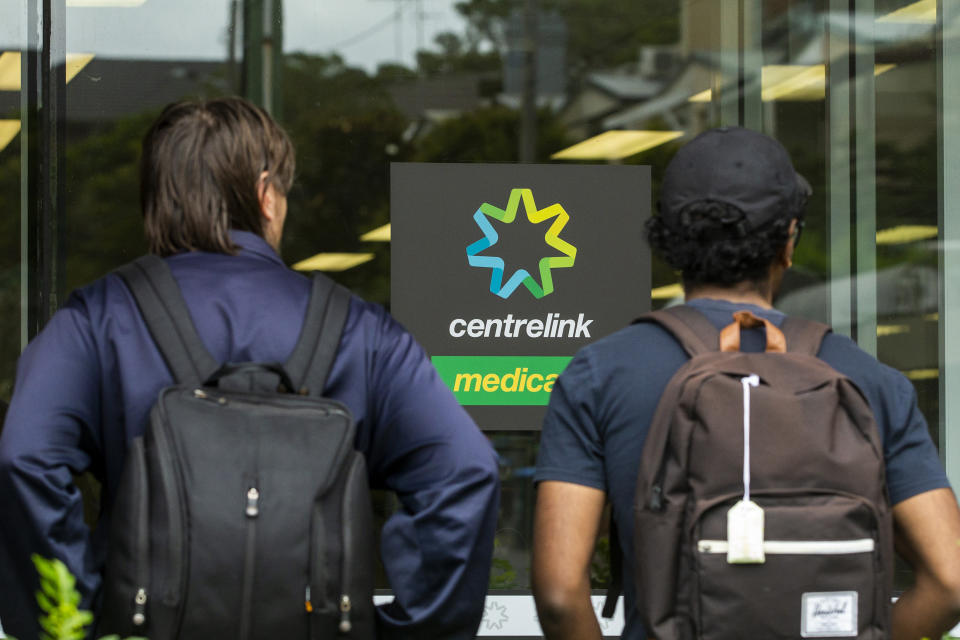JobKeeper, JobSeeker saved 2.2 million Australians from poverty

More than one-in-10 Australians would have been plunged into poverty without JobKeeper and increased JobSeeker payments, new research shows.
The Covid-19 pandemic and its associated business and travel shutdowns would have lifted the number of Australians in poverty from 1.6 million to 3.8 million without the major cash injections, the Australian National University’s Centre for Social Research revealed on Saturday.
The poverty line is set at a weekly disposable income of $416, with coronavirus pushing 2.2 million Australians below the line, the paper detailed.
However, with the current JobKeeper and JobSeeker levels of support, ANU researchers Ben Phillips, Matthew Gray and Nicholas Biddle estimate the number of Australians in poverty has fallen from 1.6 million to 1.1 million while increasing the standard of living above the poverty line for 67 per cent of households on JobSeeker payments.
The paper warned that the Government needs to identify long term solutions or face an increase in poverty once the income supports wane.
“While the September reduction in JobSeeker and JobKeeper payments are still much more generous than what was offered prior to COVID-19 we do estimate that the number of persons in poverty will increase by 740,000 persons compared to the more generous June policy,” the researchers said.
JobSeeker increased by $550 in June to $,100 with the Covid-19 Supplement, but the supplement is set to slide in September, taking the entire payment to $815. Meanwhile, the JobKeeper wage subsidies will also slide from $1,500 to $1,200 for full-time workers from September, before sliding further in the new year.
The researchers said that this 740,000 increase will reflect a 212,000 increase on pre-Covid poverty numbers.
Australia’s single parents were the most likely to be in poverty before the pandemic struck and without the support, that percentage would have increased from 20 per cent to 28 per cent.
Should JobKeeper and JobSeeker remain at current settings? Not exactly
While the paper found that JobSeeker payments were too low before the pandemic and that the social security system would have been unable to adequately respond to Covid-19, the solution wasn’t to keep payment rates where they are.
“Poverty rates and housing stress are lower than they otherwise would have been in the absence of policy change. However, there are somewhat different settings that could reduce these rates even further, without increasing the budget deficit,” the researchers said.
The researchers said the Government could reduce poverty and housing stress without spending anymore if it slightly lowered the JobKeeper subsidies but increased other income support payments.
“But to be clear this conclusion is based only on consideration of our narrow range of poverty and housing stress policy targets. The design of the JobKeeper and JobSeeker payments reflect a broader range of stated objectives including fiscal stimulus, the survival of businesses and maintaining an employment relationship between employers and their employees.”
Modelling with a target of minimising the poverty gap, or the gap between income and the poverty level, the researchers found that if JobKeeper was lowered to $1,257 from $1,500 that would provide “considerable savings” to boost other payments.
That would include boosting the Covid Supplement to $599 from its current $550 setting. Additionally, the age pension would increase to $1,081 from $944 a fortnight. Rent assistance would also increase along with some family payments. The parenting payment would be lowered.
However, the researchers emphasised that these numbers are based on one target - reducing poverty, and differ slightly when optimising the current expenditure to beat housing stress.
“What we have been able to show, however, is that With the same level of expenditure a greater reduction in poverty and housing stress could have been achieved by a better targeting with regards to poverty and housing stress, and in particular by a slightly lower JobKeeper payment and higher other payments.”
Make your money work with Yahoo Finance’s daily newsletter. Sign up here and stay on top of the latest money, news and tech news.
Follow Yahoo Finance Australia on Facebook, Twitter, Instagram and LinkedIn.


